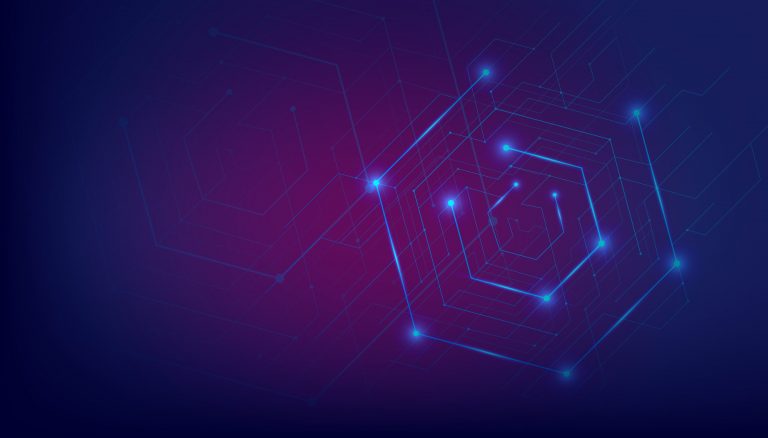AI
NetLLM: Your Handy Automated Network Assistant

Key Points
- Network monitoring and maintenance can be a headache for everyone involved: Users don’t have good visibility or understanding of their networks, customer service and field technicians don’t have a complete picture of a user’s network, and operators can face mounting costs from excessive truck rolls.
- NetLLM is an automated solution powered by AI that simplifies network analysis and management.
- Continued work will give large language models a better understanding of networking and become more fluent in network language.
If you’ve ever spent any time online, you’ve probably uttered some variation of this: “What’s happening with my internet!?” Whether or not you’re technically proficient, your first step toward fixing your network problem is always the same: Shout your frustration into the void.
If you’re a networking professional, you might then open Wireshark and manually search for the culprit — and maybe even find a solution. However, if you don’t have a networking background, you’ll probably have to call customer support and schedule a technician to come over and solve the problem. But that route can be expensive and time-consuming. Is there a reliable way to fix networking problems that pop up while also avoiding the cost of customer support, all while providing a great experience for the user?
The Response From the Void
The solution to this hair-pulling is a CableLabs prototype called NetLLM — your home networking assistant. Powered by a large language model (LLM) that lives on your home router, NetLLM looks at your network activity and any other relevant information (e.g., configuration files, records of past incidents, network metrics such as signal strength and channel noise). Then, it explains the problem in greater detail and attempts to fix it.
Your entire interaction with this automated network assistant could be a one-off response, or it could develop into a conversation in which you and NetLLM discuss the problem and try to address it — all in plain English.
If the issue cannot be resolved, NetLLM will at least add some transparency to the errors and make them less cryptic by explaining them in less technical terms (“Ohhhh, that’s what a DNS error is”). You can also choose to record the interaction so that you can send that information to customer support when you call in, thus providing the important context about the network conditions that caused the problem and what steps have been taken already.
Networking as a Language
The key to NetLLM is that it treats network communication as its own language.
Like any other language, each networking protocol has its own system of syntax and semantics. However, unlike the syntax of human languages, networking syntax is much more structured; the packets themselves and the packet sequences are organized in a very specific way that provides semantic meaning. Thinking of computer communication as a language is the key to using an LLM to decipher problems in a network — just as an LLM can be used to explain and interpret a conversation between humans.
It’s important to note that the real power of NetLLM isn’t the chat interface it uses to converse with users but rather the network LLM it uses for the problem diagnosis itself. The training will be performed with a curated dataset of question-and-answer pairs about network traffic from a wide variety of sources, including Internet of Things (IoT) devices, various network attacks and regular traffic.
Network Configuration and Management
In addition to being trained to recognize and understand network traffic, NetLLM has also been trained to manage and configure a network. For a home user, network management entails updating network settings to fix user issues (e.g., manipulating firewalls, resetting DNS, remedying jittery video calls). So, if any of the problems found in the diagnostic step are the result of configuration issues, NetLLM will attempt to fix those.
A user can also request a network configuration change such as changing a password or creating a guest network in simple English without needing to pull up the router’s configuration user interface (UI).
Future Development
Where do we go from here? In addition to being a reactive tool that a user can utilize manually to seek network assistance, the goal is for NetLLM to be a proactive feature and run as a daemon in the background, monitoring your network both for optimizations and security threats.
This is the ultimate in customer service: solving problems before the customer is even aware of them!
Your IT Buddy
This automated network assistant has the potential to be a one-stop shop for everything happening in your home network and the wider internet, all while protecting you from potential problems. With its diagnosis, configuration, and management capabilities, NetLLM gives you full insight into your network and allows for easy configuration — all in understandable English.
Even if you are a networking professional and have the skills to fix problems on your own, NetLLM can save you time. From advanced features such as setting up firewalls and fixing problematic video calls, to more everyday functionality such as managing passwords and monitoring your network, this CableLabs tool makes network troubleshooting and management as easy as asking a very talented IT friend for help.
Wireless
CableLabs Brings Mobile Wi-Fi’s Power to Wi-Fi Industry for a Better User Experience

Wi-Fi can be frustrating! It sometimes works and sometimes doesn’t. Identifying the problems can be difficult, and people often just turn Wi-Fi off on their device and instead use their cellular data connection. In doing so, they miss out on the potentially much higher throughput, and hence the faster Internet connection, that a Wi-Fi connection can provide. If only Wi-Fi acted more like the cellular network!
What Is CableLabs Mobile Wi-Fi?
For several years, CableLabs has been working on a technology to achieve exactly that. CableLabs Mobile Wi-Fi uses a central controller to group multiple access points or APs (think routers) into one continuous network. The central controller detects which AP your device is closest to and connects your device to that AP. If you move—for example, getting up and walking to a different room—then the controller evaluates whether you would get the best experience by staying connected to the old AP or if your experience would be better by switching to a new one. If it’s the latter, the controller moves your device to the new AP without you even noticing.
There have been many attempts to do this over the years, typically relying on coercing the device to reconnect to the new AP, but this frequently seems not to work quite right. Sometimes, there’s a lag before a device switches APs, and sometimes the device never switches APs. Or sometimes, the device insists that an AP is still present, even though it no longer is—for example, when you leave your house in your car and your phone insists it's still connected to your home Wi-Fi.
How Does CableLabs Mobile Wi-Fi Work?
Instead of asking the phone to reconnect to a different AP, CableLabs Mobile Wi-Fi moves the network itself to the new AP. It does this using a virtual Basic Service Set, or VBSS. A VBSS is a network set up exclusively for use by one device and can be moved from AP to AP without the device disconnecting and reconnecting. This makes the transitions between APs seamless and transparent to the phone.
So now, as you walk around your house with your device, the CableLabs Mobile Wi-Fi controller is moving your VBSS such that it follows along with you, hopping from one AP to another as you go. If you wander too far and go outside the range of all your APs (like when you drive away in your car), the CableLabs Mobile Wi-Fi controller detects this, closes your connection and tears down your VBSS so that your phone immediately knows there is no longer a Wi-Fi connection. The phone will then immediately switch to cellular data.
The result is that your device will be consistently connected to the best available AP in your space. Gone will be the days of being connected to an AP across the house instead of the one right next to you. Your Wi-Fi will be better and faster.
When Can I Get It?
CableLabs Mobile Wi-Fi is not yet available to end consumers. For the next step toward a commercial implementation of CableLabs Mobile Wi-Fi, CableLabs has joined and is working with the prpl Foundation to include Mobile Wi-Fi in the open-source prplMesh implementation of Wi-Fi Alliance EasyMesh™️. Go to the prpl website for more information about prplMesh and access to the prplMesh codebase. CableLabs is also working in Wi-Fi Alliance to support Wi-Fi CERTIFIED EasyMesh.
For more information on CableLabs Mobile Wi-Fi, reach out to Steve Arendt, Principal Architect & Director, Advanced Technology Group, CableLabs.


